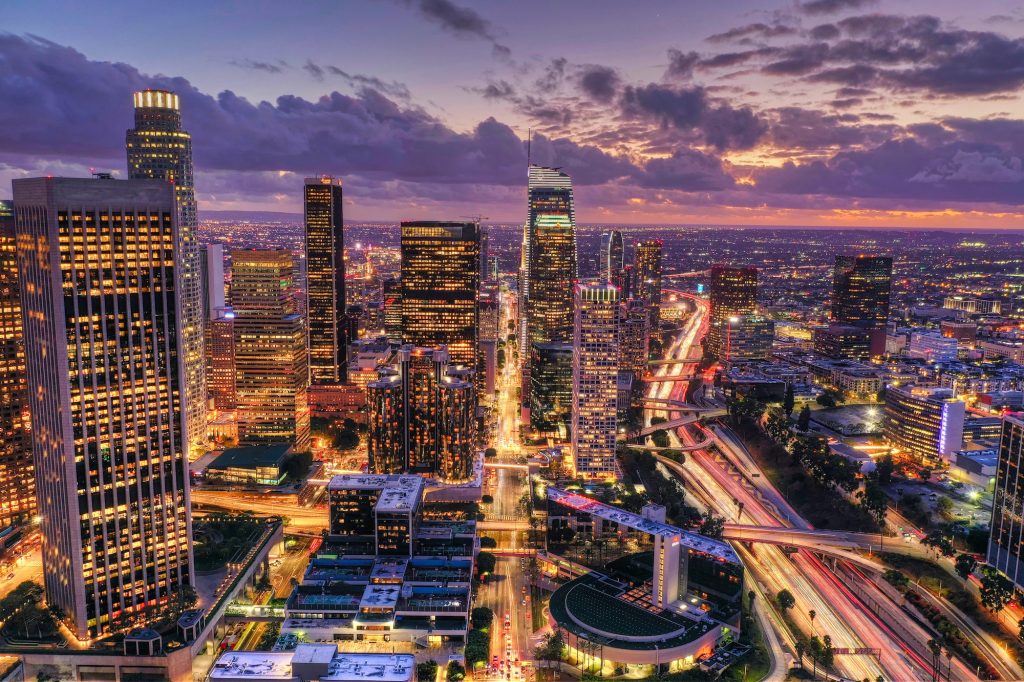We don’t see them, but they’re out there.
Rare, elusive, and well-camouflaged, snow leopards are exceptionally hard to spot. When sighted, these majestic cats seem to have come out of nowhere. And yet they were around us all along.
In the discipline of global foresight, as the Atlantic Council’s Peter Engelke wrote last year, a “snow leopard” is “a known but underappreciated—perhaps even forgotten—phenomenon” that has the potential to change the world and shape its future even though appearances might suggest otherwise.
The snow leopards discussed here are not predictions, but rather prompts for us to scrutinize overlooked phenomena. A technological breakthrough, for example, may not seem world-changing when still in development. Other phenomena might be so woven into our daily lives that they’ve become invisible to us, as with the recommendation algorithms highlighted below. The actors involved also influence how much weight we give to events and trends: If a head of state were to announce a country’s economic disengagement from China, we would sit up and pay attention, but companies deciding one by one to proceed with such “decoupling” may fly under the radar.
Our next-generation foresight experts at the Scowcroft Center for Strategy and Security brought a fresh perspective to the task of spotting the hard-to-spot. Check out their list of six snow leopards to watch closely in the year ahead.
Algorithms are everywhere yet almost invisible, serving as the silent sifters and sorters of our lives. Their influence is baked into everything from email and smartphones to GPS and government services. On search engines and social media, “recommendation algorithms” leverage user data and history to curate information for billions of people. In their simplest form, algorithms are instructions or sets of rules—often used by computers—for completing a task. At their most complex, they drive machine learning and enable artificial intelligence (AI) to grow smarter and more sophisticated by the second.
With such sweeping capacity to shape how individuals and societies order and consume information—from the mundane recommendations of photo feeds and shopping lists to the grave amplification of extremist conspiracy theories that cause real-world terror—algorithms (and their designers) hold some responsibility for the social and political consequences of the content they propagate and the decisions they advance.
The need for AI governance, particularly to rein in algorithms, is increasing—and policymakers have demonstrated an appetite for it. This October, the White House published an AI Bill of Rights with a blueprint for addressing “algorithmic and data-driven harms” and potential remedies. Lawmakers in the US Congress have proposed legislation to limit algorithmic promotion of extremist content by holding social-media platforms liable if certain forms of amplified content lead to offline violence, with other bills on the subject under consideration as well. China implemented a law in 2022 to reduce algorithmic influence on public opinion by enabling users to decline algorithmic recommendations on websites and apps. (The law was part of China’s pursuit of “positive energy” online, under the country’s aggressive censorship.) The EU’s Artificial Intelligence Act, the first major, still-pending regulatory framework for AI that could set global standards, strives to curb algorithmic bias. The EU’s General Data Protection Regulation (GDPR) also offers guidelines on when companies can and can’t use algorithmic automated processing for decision-making—for example, regarding who to offer a loan to or at what interest rate.
Regulating algorithms is a broad and complex challenge, and pushback by the tech industry along with legal hurdles could halt even the most ambitious regulators. The public, and even policymakers, often lack the conceptual clarity to identify, define, and classify algorithms. And because it can be difficult to prove causation between algorithmic decision-making and the behavior or opinions of individuals influenced by it, accountability is hard to track.
Further breakthroughs may happen below the national level. New York City is reviewing the use of algorithms in decision-making across its government agencies and offices. The City Council curtailed the use of AI algorithms in decisions about hiring and promotion. And these steps are just the beginning, as state houses and activists energetically join the race to shape this new frontier.
In the days after the Kremlin launched its illegal war on Ukraine, Western companies based in Russia started fleeing the market, fearing unprecedented transatlantic sanctions, consumer backlash for continuing to do business with an invader country on an imperialist bender, and investor pressure to maintain profit margins. Now, as tensions between the West and China escalate, wary investors and multinational corporations may be starting to preemptively shift their market presence, supply chains, and investments away from China to insulate themselves from similar future impacts should the Sino-transatlantic relationship deteriorate.
Among the most interesting early developments: Apple, which has a huge production footprint in China, has decided to shift production of its iPhone 14 model to India, while some of Google’s production for the new Pixel phone will likely be heading to Vietnam. Another space to watch is pension funds, as growing concerns about political risks are prompting discussions about potentially exiting or at least reducing exposure to the Chinese market.
While it’s still early to call such decisions formal decoupling, these signs point to Western companies’ unease about the state of the Sino-transatlantic relationship, as well as a preemptive, corporate-led fragmentation of markets and supply chains in case tensions between China and Western countries bubble over. The private sector’s concerns about China’s restrictive zero-COVID policies, which have led to recurring lockdowns and disruptions at factories, may also be a factor in these developments, but the roots of these corporate moves can be traced back further to extensive tariffs and other economic tit-for-tat measures between China and the West—as well as nervousness about China’s own pursuit of self-sufficiency via efforts such as its “Made in China 2025” initiative. At stake in how these trends play out is nothing less than the future of globalization as we know it, along with the shape of the multipolar geoeconomic order, in which countries such as India will likely play an enhanced role.
The two main reasons why consumers are reluctant to buy electric vehicles? They cost a lot and can’t get very far on a charge. But a battery that could make electric cars cheaper, more efficient, and thus more popular may be on the horizon. The next breakthrough could come not by way of an updated lithium-ion battery—the kind that powers most electric vehicles on the road today—but rather by using current battery technology in different form through structural batteries built into a car’s frame. This has the effect of reducing the car’s weight (a chassis made of battery cells isn’t as heavy as a chassis plus a separate battery) and a lighter car can travel farther on a single charge. The potential benefits go far beyond increasing range. Integrating the battery into a car’s chassis could also cut down on manufacturing costs and make cars cheaper, while strengthening the body of the car as well.
Tesla has experimented with structural batteries in its Model Y cars and GM used them in the electric model of its Hummers, but their versions have yet to yield broader adoption. Yet technical development among automakers and other actors is ongoing and promising. Researchers at Sweden’s Chalmers University of Technology, for example, recently developed a more efficient structural battery that performs ten times better than its predecessors. Right now, electric vehicles are driven mostly by the wealthy: In the United States, for instance, 78 percent of federal electric-vehicle credits go to those with incomes over $100,000. If structural batteries can deliver on their promise, it will result in many more electric vehicles on the road around the world, democratizing ownership.
An uneven post-COVID-19 economic recovery has stoked a labor-rights movement in the United States and efforts to unionize in some of the country’s largest corporations—from Starbucks to Amazon to Trader Joe’s. Around the world, meanwhile, similar fallout from the pandemic has produced another phenomenon: Platform workers—those who work for organizations that provide services directly to consumers through an online platform—are leading efforts to create better working conditions for themselves. Strikes and other protests from Brazil to the United Kingdom to the Philippines and beyond speak to rising unrest among these workers. The causes for disputes and the types of protest vary across regions, but concerns about pay are often a primary driver of the activity.
Such developments are significant in part because platform workers are a subset of the informal economy, which encompasses economic activities that are not monitored by the state. These activities include a wide range of work—from domestic labor to rideshare driving to market stands. More than 60 percent of the world’s adult labor force operates, at least part-time, in the informal sector, and on average that sector represents 35 percent of gross domestic product in low- and middle-income countries. In many cases, particularly in emerging markets and developing economies, platform workers are not aiming to formalize their economic activities. But their budding efforts to improve their working conditions could alter the world of work for the better, more strongly linking them with government protections and helping curb global poverty and precarious employment.

One approach to combating climate change is geoengineering, or deliberate, large-scale, technologically based interventions in the environment to mitigate some of the effects of climate change. These include removing carbon dioxide from the atmosphere and reflecting the sun’s rays back into space. Futuristic though it may sound, geoengineering is already here. China and the United Arab Emirates have undertaken efforts to “seed” clouds by artificially increasing the amount of precipitation they hold and creating rain. Researchers from the UAE’s National Center of Meteorology have looked into creating an artificial mountain that would induce cloud formation and rain. Other countries, including China, India, and the United States, are making steady progress in advancing their geoengineering capabilities. The 2022 federal appropriations act, for example directed the US Office of Science and Technology Policy to develop a multi-agency group for coordinating research on solar geoengineering. This form of climate engineering, where sunlight is sent back into space, seems most likely to have the biggest impact on limiting the consequences of climate change and thus most likely to be pursued.
But along with its promise solar geoengineering also brings numerous risks, including the potential alteration of regional weather patterns. There’s also the increasing likelihood that, given the pace of climate-driven impacts such as floods, droughts, severe storms, and heat waves, a country or multiple countries will attempt to geoengineer the planet unilaterally, before the underlying science is solidified and before adequate global governance mechanisms are in place.
Although Japan and South Korea normalized diplomatic relations in 1965, their relations have continued to be complicated by the legacy of Japan’s colonization of Korea from 1910 to 1945, memories of World War II, and disputes over how to compensate Korean women who were forced into wartime sexual slavery by the Japanese military.
Despite this history, deeper reconciliation between the two countries, while politically difficult, is not an impossibility. In one indicator of a coming thaw, a meeting between South Korean President Yoon Suk-yeol and Japanese Prime Minister Fumio Kishida on the sidelines of the 2022 United Nations General Assembly, framed as a brief, informal gathering to avoid setting off domestic opposition at home, marked the first bilateral meeting between the leaders of these nations in three years. In another sign, the Japanese and South Korean publics are coalescing around concern about China. Were such a rapprochement to occur, it would dramatically alter the geopolitical environment in Asia while delivering significant benefits to both countries. Japan and South Korea face common and acute threats from China, North Korea, and Russia. With better relations, the two countries could pursue closer bilateral military ties, reach mutual understandings of regional threats, and develop responses to crises as they emerge. South Korea, one of the world’s leading advanced economies, could get more involved in the Quad grouping of Australia, India, Japan, and the United States. The United States would be able to count on both nations to counterbalance China’s influence in the region, while the three could promote shared values throughout the Indo-Pacific.

Global Foresight 2023
In this year’s edition of Global Foresight, the Atlantic Council’s senior experts identify the top risks and opportunities for 2023. Our foresight team spots “snow leopards” that could have major unexpected impacts in 2023 and beyond. And we share findings from our survey of global strategists and foresight practitioners on how human affairs could unfold over the next decade.







